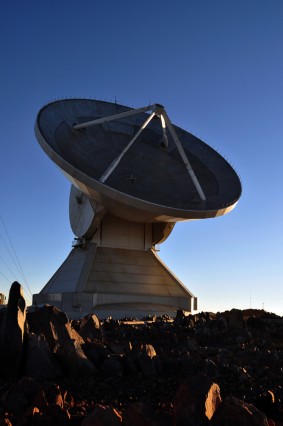
The Early Science Phase (since 2014 until 2017) consisted on partial seasons of shared-risk scientific operation, during the execution of the expansion of the telescope primary reflector from 32-m to 50-m diameter as part of the Telescope Completion Plan. Four Calls for Proposals were released to conduct science observations using the 3 mm wide-band spectrograph (73-111 GHz) Redshift Search Receiver (RSR) and the 1.1 mm (273 GHz) continuum camera AzTEC. Membership of the Scientific Project Teams were open to individuals with affiliation at a Mexican research institution or at the Department of Astronomy at the University of Massachusetts and the Five College Astronomy Department.
During this Early Science Phase, the LMT participated in Very Long Baseline Interferometry observations and the Event Horizon Telescope.
Early Science Observations resulted in the first high impact publications, which are listed here.